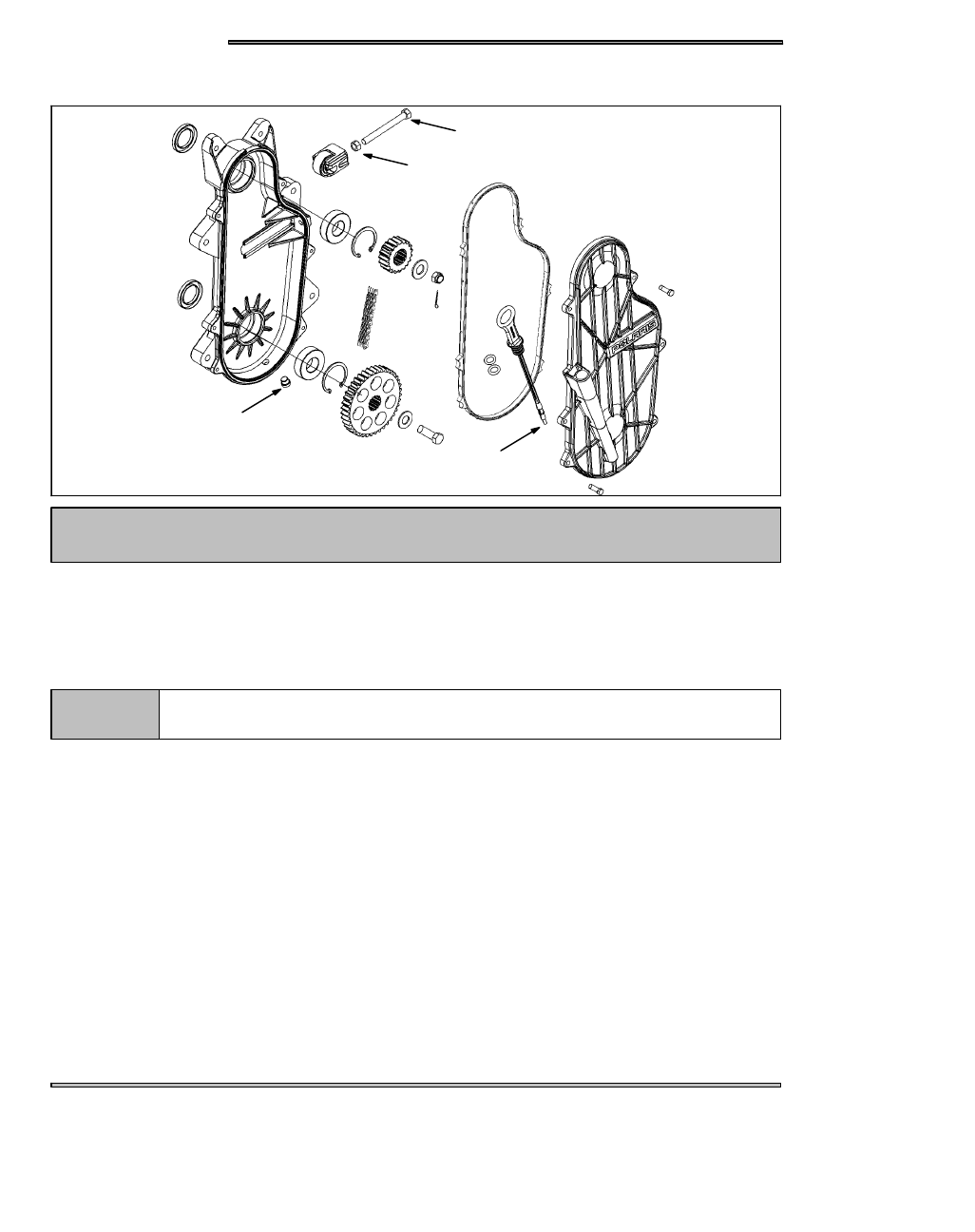Snowmobile Polaris DEEP SNOW (2005 year). Manual - part 13

MAINTENANCE
3.8
CHAINCASE
Do not mix or use improper types of lubricants in chaincase. Excessive wear to chain, sprockets
and bearings may result.
CAUTION:
The drive chain is continuously immersed in the chaincase oil.
Proper oil level is determined by checking the level on the dipstick with machine placed on a level surface. The oil level should
be between the “safe” marks on the dipstick.
NOTE:
Clean the magnetic plug (E) every 500 miles (800 km) and whenever checking or changing
lubricant. Metal shavings on magnetic plug are signs of normal wear.
The dipstick has a magnet on the end of it. When you check your chaincase oil level for the first time do not be alarmed if you
see small metal shavings. These shavings are common for chaincase break in and the magnet is there to keep the shavings from
floating around.
Add oil through dipstick opening to maintain proper level. Use Polaris chaincase oil. Do not overfill.
DRIVE CHAIN TENSION
1. Elevate rear of machine so track is off floor.
2. Rotate driven clutch counterclockwise to move all chain slack to the tensioner side. Lock the brake lever.
3. Loosen adjuster bolt jam nut (C).
4. Finger tighten adjuster bolt (D) until it can no longer be adjusted by hand.
5. Back off adjuster bolt 1/4 turn.
6. Tighten jam nut while holding adjuster bolt.
7. The chain is now tensioned. Release brake lever lock.